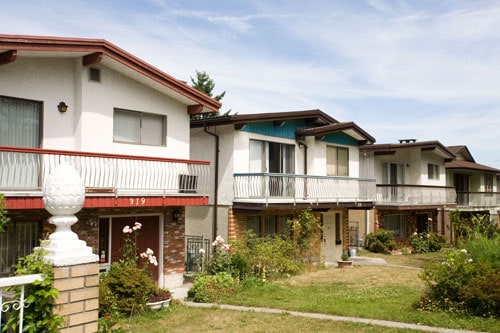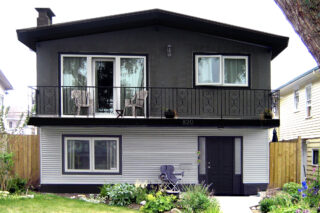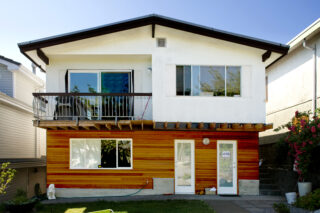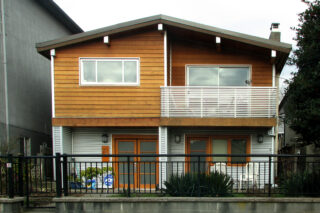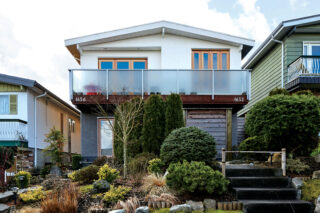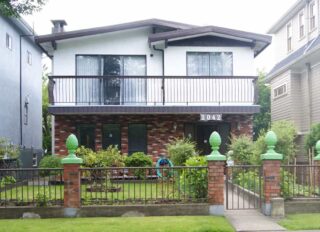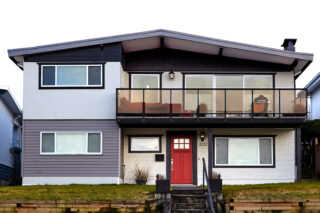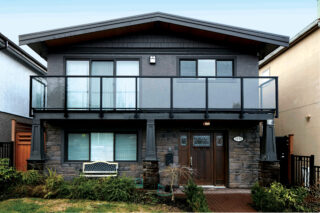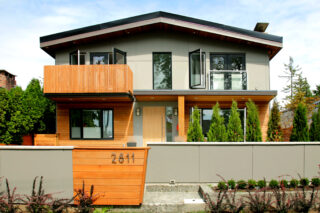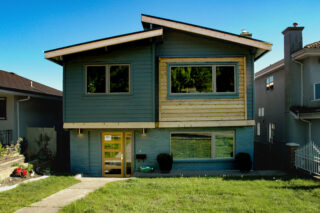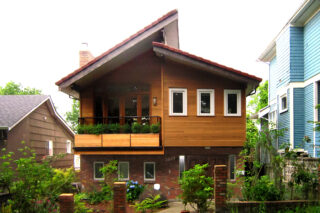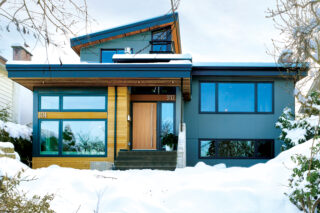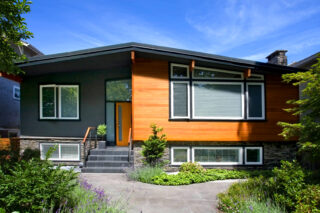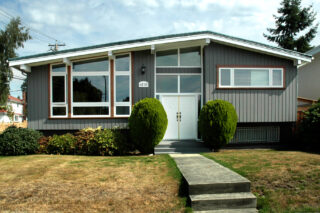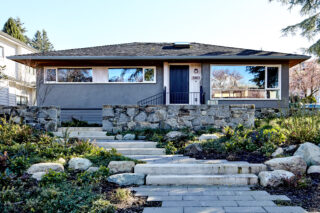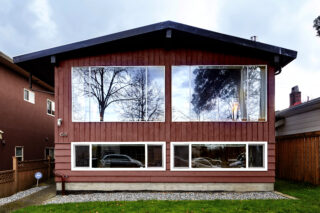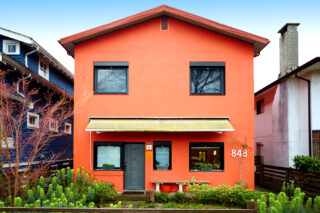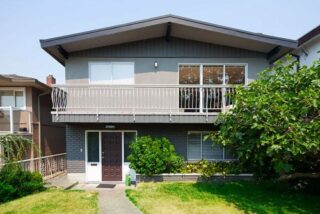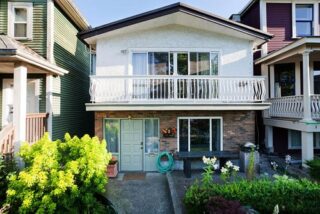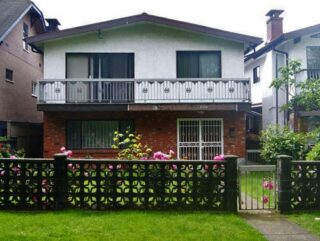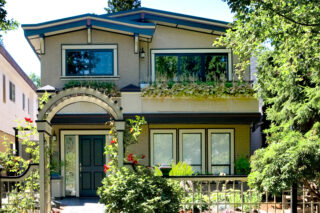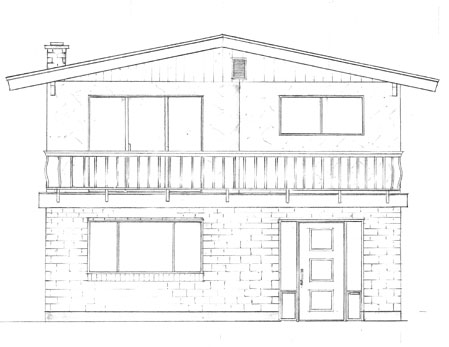The most common form for the Special is an all stucco house with the lower façade in brick (or sometimes stone) veneer. Some houses are wood paneled with a change in configuration on the façade and the stucco is painted to match the wood stain. Balcony railings are most often iron or aluminum – often repeated in the fencing in front. Original windows are usually aluminum. Vestigial coach lamps are often found to the inside upper corner of the living room window on the upper floor. Guardian statues (especially lions rampant) often prevail, mounted at the front gate or stairs.
Read this article by Chris Cheung in the Tyee “How Vancouver Specials Got Guardians”
